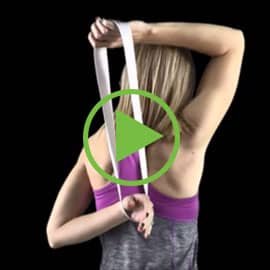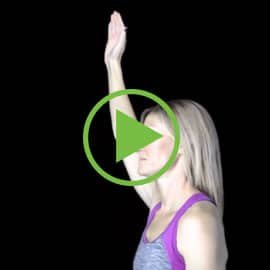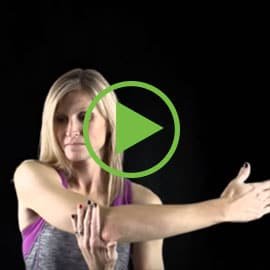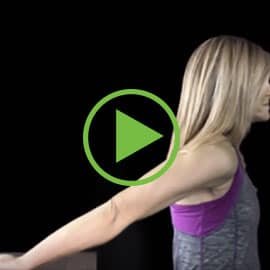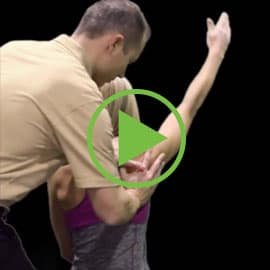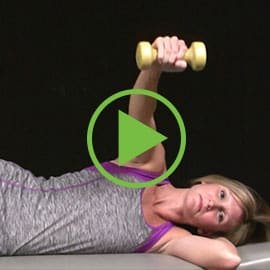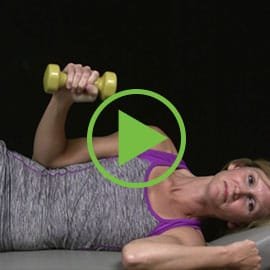7 Things You Must Know About Chronic Shoulder Pain
Shoulder problems are often multifactorial and difficult to treat. Acute shoulder pain frequently morphs into chronic shoulder pain from a failure to identify what is generating the problem, and a lack of understanding about why that tissue is it not healing. Independent of the anatomical origin, here are the seven top recommendations for successfully managing shoulder pain!
Watch Dr. Steele explain why these seven tips are so crucial.
In chronic pain situations, merely identifying the injured tissue is not good enough! Proper diagnosis includes also identifying:
the activity(s) causing tissue overload, i.e., repetitive overhead stress
functional deficits that delay recovery, i.e., scapular dyskinesis
daily functions that may limit healing, i.e. improper sleep posture
Regardless of tissue injury, nearly all shoulder complaints involve pain in the anterolateral arm that is provoked with shoulder flexion/abduction and sleeping on the affected side. Clinical symptoms rarely provide enough information to diagnose (let alone treat) chronic shoulder dysfunction. Likewise, while imaging can help identify structural lesions, those issues are often secondary sequelae of the real culprit. Making a bad situation worse, MRI becomes irrelevant in chronic pain, as structural injury to the shoulder rarely correlates with pain. (1)
Before you throw up your arms and abandon challenging shoulder cases, consider my seven tips to help resolve chronic shoulder pain.
1. Restore Range of Motion
Assessment of lost ROM guides your initial treatment. Restoring ROM via removing compensatory muscle stiffness and joint restriction are critical factors. Don’t forget, loss of ROM may be the cause, or the repercussion, of tissue injury. Quick ROM gains are often achievable in-office but don't forget about the hours each patient is at work or home. Postures, hobbies, and daily activities are often the reason patients experience chronic shoulder pain. Assess for lost ROM by comparing the affected shoulder with the unaffected side. Then, restore lost ROM with these four passive stretches:
2. Remove the Most Common Cause of Symptoms—Impingement
Correcting scapular mechanics improves the load-sharing ability of the glenohumeral joint and minimizes subacromial impingement. A study by Kim et al. found that posterior tilt scapular setting exercise increases subacromial space and activates scapular stabilization muscles. (2) For a full review on teaching posterior tilt to your patients, check out this past blog video.
3. Access Scapular Motion
Scapular dyskinesis diminishes subacromial space and leads to decreased rotator cuff strength, impingement, and eventual rotator cuff damage. One hundred percent of patients with shoulder impingement demonstrate scapular dyskinesis. Determining whether a patient needs scapular mobility vs. scapular stability can be accomplished using the following two tests.
A positive scapular assistance test suggests a need for mobility, whereas a positive scapular retraction test justifies stability training. (And some patients need both)
4. Prioritize Patient Education
Repetitive stress and sustained compression slow the healing process. Encourage changes to hobbies, habits, or sports that are contributing to tissue overload. Treatment and ADL advice should also address problems in the hips and throughout the kinetic chain. Removing all complicating variables leads to a quicker recovery. (3-6)
5. Reassure a Positive Prognosis
"Unhelpful thoughts of patients and clinicians towards pain, including belief that pain will not get better and that movement will cause further tissue damage and worsening of the pain, are also important issues." (7)
Be the source of reason throughout the evaluation and rehabilitation process. Genuinely reassuring patients that they do not have to live with pain is one of your greatest tools. Removing self-inflicted barriers to care is challenging, yet necessary in the treatment of chronic conditions
6. Set Expectations: Rehab May Cause Some Discomfort
A recent systematic review and meta-analysis of painful exercises versus pain-free exercises for chronic musculoskeletal pain found that protocols allowing painful exercises offered a small, but statistically significant, benefit over pain-free exercises in the short term. (7)
Our rehab of shoulder pain will generally transition from protection to progressive challenge. Mild to moderate discomfort with tendinopathy rehab is acceptable. Use change in nighttime pain as your guide for exercise progression. Back away from advancing tendinopathy rehab anytime the patient’s nighttime pain increases.
7. The Key to Shoulder Rehab Is Strengthening, Not Rest
The evidence supports a slowly progressive loading program, rather than complete rest, with other treatment modalities used as adjuncts for pain relief. (8)
If your diagnosis includes rotator cuff tendinopathy, consider the following eccentric strengthening exercises:
Shoulder problems are often multifactorial. While the pain can be debilitating, it doesn't have to be long-lasting. Restoring movement control, correcting scapular dyskinesis, and teaching the patient how to manage their condition can often be accomplished relatively quickly.
That being said, expecting your patients to remember every component of their treatment is often unrealistic and can result in the need to re-explain the various parts of their treatment to ensure compliance.
That stops now.
ChiroUp’s Condition & Exercise Reports reduce the time you spend educating your patients to seconds while ensuring better compliance and overall satisfaction.
Each report instantly communicates best practices for your patient’s specific condition from the most up-to-date, evidence-based literature. ChiroUp condition reports detail the essential points of patient education:
Lay Condition Description
In-Office Treatment
Outcome Goals
Advice on Daily Living
Exercises with Video Demonstrations
If you haven’t done so yet, get started with your free 14-day trial, and build your first report within seconds.
-
Stetson WB, Polinsky S, Morgan SA, Strawbridge J, Carcione J. Arthroscopic Repair of Type II SLAP Lesions in Overhead Athletes. Arthroscopy Techniques. 2019 Jul 18. Link
Kim SY, Weon JH, Jung DY, Oh JS. Effect of the scapula-setting exercise on acromio-humeral distance and scapula muscle activity in patients with subacromial impingement syndrome. Phys Ther Sport. 2019 Mar 18;37:99-104. Link
Kebaetse M, McClure P, Pratt NA. Thoracic position effect on shoulder range of motion, strength, and three-dimensional scapular kinematics. Arch Phys Med Rehabil 1999;80:945–50. Link
Finley MA, Lee RY. Effect of sitting posture on 3-dimensional scapular kinematics measured by skin-mounted electromagnetic tracking sensors. Arch Phys Med Rehabil 2003;84:563–8. Link
Gumina S, Di Giorgio G, Postacchini F, Postacchini R. Subacromial space in adult patients with thoracic hyperkyphosis and in healthy volunteers. Chir Organi Mov. Feb 2008;91(2):93-96. Link
Sciascia AD, Thigpen CA, Namdari S, et al. Kinetic chain abnormalities in the athletic shoulder. Sports Med Arthrosc Rev 2012;20:16–21. Link
Smith BE, et al. Musculoskeletal pain and exercise— challenging existing paradigms and introducing new. Br J Sports Med Month 2018. Link
Cardoso TB, Pizzari T, Kinsella R, Hope D, Cook JL. Current trends in tendinopathy management. Best Practice & Research Clinical Rheumatology. 2019 Mar 8. Link

